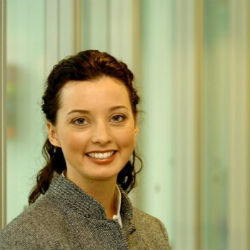
A journey of three objectives

O’Dea described EY as being on “a journey to be a different type of organisation”. Its ambition, part of its Vision 2020+ strategy, is by 2020 to be a US$50 billion “distinctive professional services organisation”. To help achieve that it needed modernise its employee solutions.
This wasn’t the only consideration. O’Dea commented: ”We are changing rapidly as an organisation. Our workforce is changing, there are more millennials, there is an increase in contingent workers.”
People also are changing how they work. There are megatrends such as digital disruption, the rise of analytics and mobile working. According to O’Dea, EY needs to disrupt itself to stay ahead. To do that it set itself three objectives for the programme:
- Business Value: This is about making sure that all changes add business value. It wants to increase efficiency and reduce costs through the adoption of simpler tools. As the company grows those tools should also help manage costs and manage that growth as well.
- Peoples experience: Deliver the best experience possible to EY people. It also wants a common approach across the globe. The historic situation was that there were different experiences across the globe.
- Innovation: EY talks to clients about innovation and wanted to instil it within its own culture. O’Dea commented: “It is important that we do it to ourselves to add to business value and enhance People experience.”
Key to this transformation was SAP SuccessFactors. O’Dea added “Rolling out SAP SuccessFactors is at the heart and it is a catalyst for change. “
That change was not just about changing the technology. It was also changing processes, streamlining processes, enabling mobility and innovating along the way. Did it meet its own business objectives?
Delivering Business value
O’Dea commented: “We wanted to deliver business value as quickly as possible, we decided to start small.”
That start small strategy is something that moved EY from an ethos of waterfall style projects to a more agile deployment. The strategy permeated the implementation. EY chose to deploy the simpler modules first. Things that they could deploy quickly and deliver the business value that they wanted.
The first deployment was onboarding. Within a year there was a consistent approach globally. However, even within onboarding EY did not deploy the whole solution. They went live with the pre-hire onboarding portal. Partially, O’Dea later explained, as SAP are due to bring out a significant update to the product in 2019. The approach will allow them to decide when and how to move to the new version without a significant change process.
Next on the agenda was performance and goals, and finally employee central. The aim was deliver bite size chunks that the team and the company could easily consume. This small chunk approach extended even further down. Within performance and goals they rolled out feedback, then reports. Within reporting it was further broken down to feedback consolidation reports and then year end reports.
This shift to a more agile approach was not easy and there were some cultural hurdles to overcome. For example, it had to shift from a traditional approach of getting it right for go live to one of good enough to go live and then improve it. O’Dea noted that using this approach it has taken time to build trust with the stakeholders.
It is an important lesson for businesses adopting an agile approach. Talking about implmenting a good enough solution on day one is fine, but only if users then see further improvements. They need to balance the speed to deployment against the more traditional way of meeting (sometimes) all the requirements on the first implmentation.
Improving People Experience
O’Dea stated “The career experience is sacred to us. Whenever your join, however long you stay, it lasts a lifetime. Traditionally we came up short on this.”
To resolve this EY used a design thinking approach. O’Dea commented: “We decided to fully embrace design thinking. To use it at the heart of our program. We identified a group and trained them.”
EY now uses a design thinking approach to problem solve on the programme. It has helped them find new and innovative approaches in their transformation journey according to O’Dea. They also continue to use more traditional methods such as user forums to compliment this new approach. These help provide greater diversity and allow for designs to be run through, for the ideas to be played back to the users forms and for UX testing. They take the outcomes of these recommendations and outcomes seriously. It allows for greater iteration and adjustment the designs. Arguably this is also in line with Design Thinking according to Marc Stickdorn, co-author of This is Design Thinking doing and a thought leader on the subject.
One thing that O’Dea highlighted was that as part of the project, EY has embraced diversity in terms of languages within the new solution. She commented “We have taken a decision to introduce as many languages as possible in the core SuccessFactors suite. We are proficient in English but we have a lot of tools in local language and to this has helped drive adoption of self service.” In total EY has adopted 13 languages for the system. It was interesting that this was important enough for O’Dea to highlight.
While organisations often have a common language, not every one is at the same level of proficiency. Embracing diversity of language was cleary important. However, with a single core system of record and processes those variations were easier to support.
Supporting Innovation
According to O’Dea, having SuccessFactors at the core was crucial to enable innovation. It was therefore vital that it was adopted as quickly as possible. It would provide a baseline across the globe. EY is now able to innovate on top of the HR core as they have consistency in the ways of working, processes and tools. This allows them to measure of the success of innovations they can also also demonstrate the economies of scale.
One area that EY is innovating in is Artificial Intelligence. They are working with both SAP Leonardo and IBM Watson. Powered by Watson a new chatbot, Goldie was set up to support the roll out and usage of the performance and goals module. It provides help in a simple question and answer format. O’Dea said “We set it up in 2 months and fed in Q & A. We were blown away over the course of a month. In the first month, it had answered 1 million questions. They would have gone to the contact centre otherwise.”
The chatbot is now a crucial part of the EY innovation strategy, and one that they will no doubt share with customers as well. Internally they will do more. With a single innovation it delivered both business value and a better people experience. O’Dea added: “People love the instant response.” Importantly, the system also allows users to provide instant feedback on the answer, clicking on a thumbs up or thumbs down symbol enabling the administration team to improve answers, if required.
It has also implemented Robotic Process Automation around core processes. This was only possible once processes were uniform across the business. This has helped to drive further cost savings in its service centre and eliminate manual tasks.
Enterprise Times: What does this mean
O’Dea summarised what EY has learnt through this process with three points
- “We are trying to disrupt ourselves, it is not easy”
- “Be comfortable with being uncomfortable.”
- “Even when done with the transformation journey, we won’t be done.”
O’Dea took her audience through a very brief but interesting overview of the roll out of SuccessFactors. She highlighted the approaches that EY made and how it has looked outside the SAP ecosystem to supplement its solution with AI tools such as Watson. Importantly, EY will have learnt from the major internal project. It is now able to share that knowledge and experience with its customers.
SHARP SME point solutions get certified for SAP SuccessFactors

























